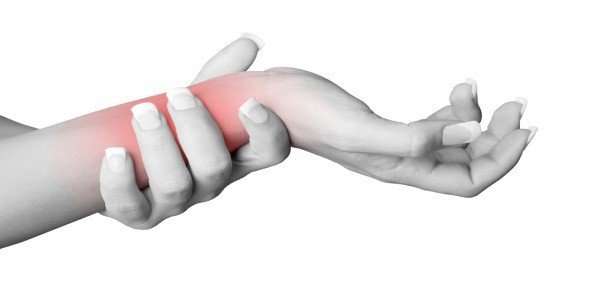Carpal tunnel syndrome

Description
Carpal tunnel syndrome, carpal tunnel syndrome or its more popular name “computer hand” is inflammation of the medial nerve of wrist, leading to numbness, stiffness and weakness in the arm.
The syndrome usually affects the thumb, index and middle fingers and often causes great distress. The medial nerve from the forearm descends and enters the palm of the hand after passing through the carpal tunnel. , which is located in the very center of the wrist.
The syndrome affects almost 5% of the population and most often develops in middle-aged men. Any activity that puts increased pressure on the medial nerve in the wrist can cause it to become inflamed . However, in many affected people no cause can be identified.
What are the symptoms?
• Numbness, pain – usually burning and tingling in the thumb, index and middle finger.
• Tingling >, numbness or pain that may extend down the inside of the arm to the elbow.
• Feeling of weakness in the arms;
• Difficulty trying to grasp smaller objects;
Symptoms of the syndrome are usually worse at night and temporarily subside with shaking of the palms.
What are the causes?
Listed below are the risk factors for inflammation of the medial nerve:
• Pregnancy;
• Rheumatoid arthritis and other causes of wrist inflammation;
• Endocrine diseases such as hypothyroidism;
• Wrist fracture;
• Alcoholism;
The relationship between occupation and carpal tunnel syndrome is not well understood. Activities that require prolonged extreme flexion of the palm at the wrist are known to increase pressure on the carpal tunnel, and this creates conditions for inflammation of the medial nerve.
This is especially true in cases of chronic deformity of the wrist or its canal. Recent research has found that long-term keyboarding can cause the syndrome.
Treatment of carpal tunnel syndrome
In mild cases, we can also help ourselves.
• Start wearing a splint, which you can buy at most pharmacies, to keep your wrist in optimal position and at rest. Splinting is applied for a period of 4-6 weeks. Some people only wear the splints at night, while others wear them both day and night, depending on when the pain is worst. If you do not feel relief within 4-6 weeks, the splints will not help you.
The syndrome is usually not a typical inflammatory process. However, in most cases it is accompanied by pain and anti-inflammatory drugs can be used to relieve it. These medications, such as ibuprofen, may provide some relief, but are unlikely to cure the syndrome.
Direct injection of steroid medication by a doctor into the carpal tunnel has been shown to be an effective treatment for some people with the syndrome. This procedure is performed in a doctor’s office, and the discomfort experienced by the patient is minimal.
How to protect yourself?
Avoiding smoking, maintaining a normal body weight and regular aerobic exercise can help prevent the syndrome.
Changing your position at the workplace as well as your keyboard may be helpful as a preventative measure, however there is no solid scientific evidence that has found that such changes can protect you from inflammation of the the medial nerve.
Appropriate treatment for wrist arthritis can prevent or cure the inflammation.



